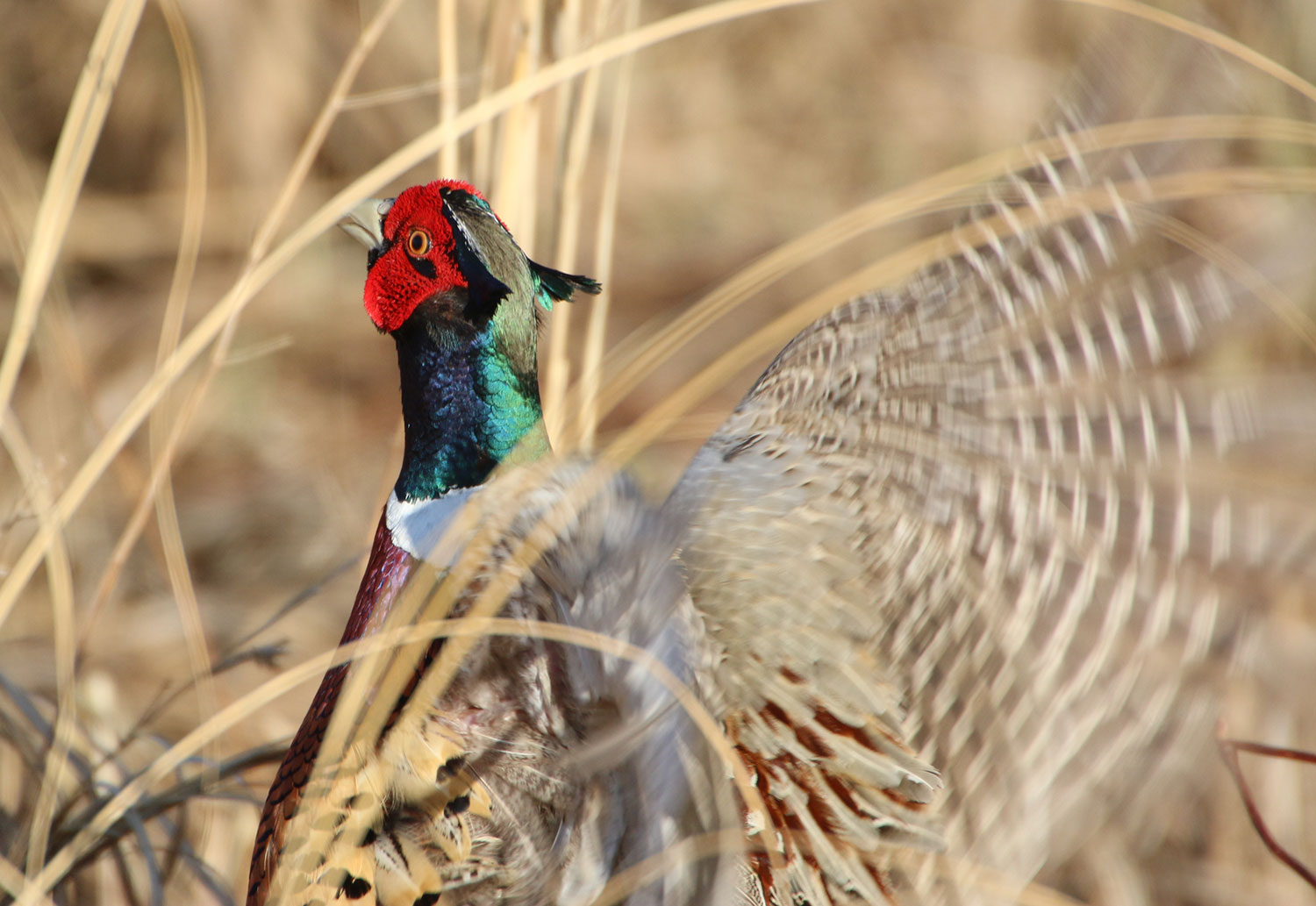Back Cast

They say you can hear a male ring-necked pheasant crow from a mile distant on a calm morning. They also tell you that roosters loudly advertise to hens their whereabouts once every two minutes.
On this day, as calm as a prairie morning as you are going to get in North Dakota, both measurements seem low.
We’re somewhere in Oliver County in early May, a half-hour before sunrise, and the only thing relaxed is the wind, as the animals are seemingly rushing into the day.
Despite years of thumbing through field guides and listening to bird calls on the computer, I’m still simply a hopeful birder. Standing outside the vehicle, I separate the musical o-ka-leee of red-winged blackbirds and, as my field guide describes it, the “flute-like jumble of musical notes” of the Western meadowlark.
Pretty pedestrian stuff.
Yet, there is so much more going on that I can’t define or put a name to. I close my eyes, focus and try to filter something familiar from the confusion of sounds that flood the countryside.
I hear the animated who-who, who-who, who-who and know immediately it’s the winnowing flight display of the male Wilson’s snipe. The sound I hear is air rushing past the snipe’s parted tail feathers as it races toward the ground.
I know this, not from paying attention in my ornithology class in college, but because years ago I simply asked a conservation biologist at work to tell me what I was hearing, what I’d been hearing for many springs without knowing it.
While cool, the winnowing isn’t what lured us out of bed at 4:30 a.m. and led us to the side of this gravel road before first light. It’s the ring-necked roosters that hunters, a group that I’m certainly a member of, get so excited about in fall, but maybe only acknowledge in the ditch in spring and summer on the way to fish somewhere.
Game and Fish Department biologists have been conducting pheasant crowing count surveys in spring for decades. When all the crowing count numbers are figured, then wildlife managers are able to arrive at an index to the male breeding population on the landscape.
(Editor’s note: While Game and Fish has been doing this for a long time, I’m tagging along this morning with my son who is counting crows for another outfit. I’m here because I like hanging with my kid and will take most any opportunity to open the morning on the prairie. I’m simply an observer who brought a thermos of coffee.)
Years ago, someone once said that the crow of a ring-necked rooster sounds like the opening of a rusty gate that gets momentarily hung up a couple times in midswing.
I’ve stuck with that description because it’s a good one and I can’t think of anything better. If I could come clean and apply attribution, I certainly would.
While the number of roosters we hear crowing in the ditch and in the distance is impressive, biologists will tell you that it’s not necessarily an indication of what bird numbers will be like in fall.
That comes later in summer when the number of chicks in broods are counted, to give wildlife managers an idea of the how many young will enter the fall population.
A lot can happen between now and then, as untimely, cruddy weather can kill chicks that don’t have the ability to combat wet and cold.
Yet, this morning, as nice of a morning as you could order, it’s hard to run my mind down that road. It’s just too nice of a day to be pessimistic.
